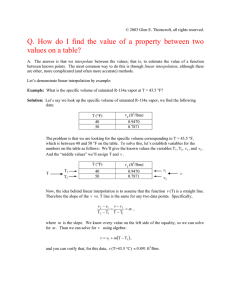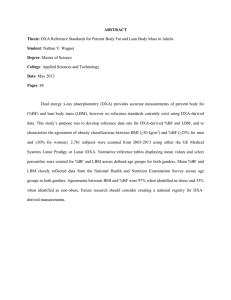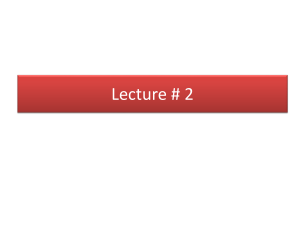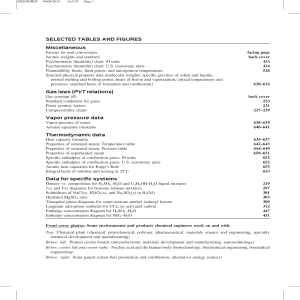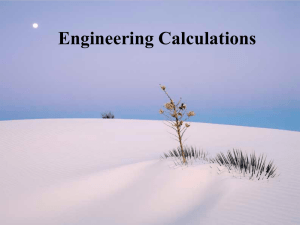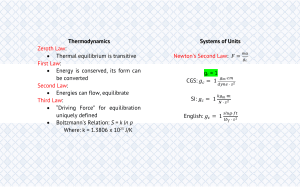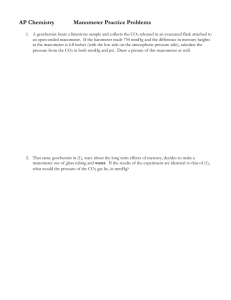Process Variables: Density, Flow, Pressure, Temperature
advertisement
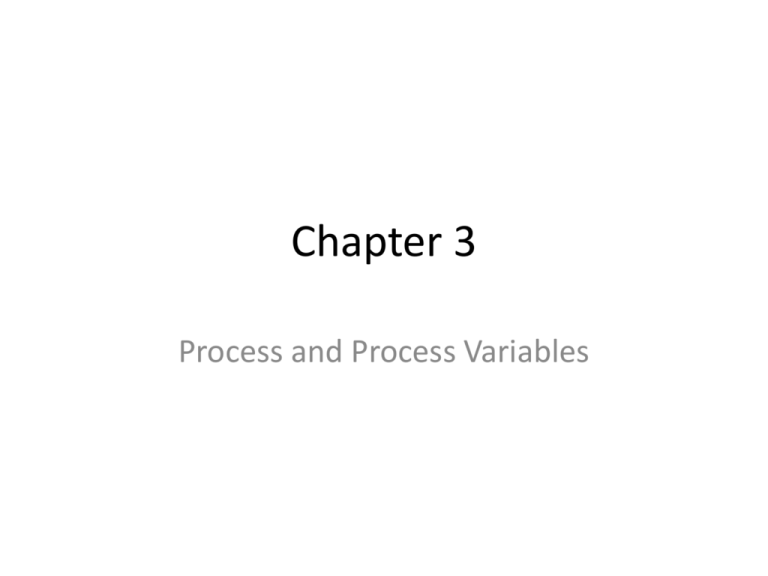
Chapter 3 Process and Process Variables Process Diagrams and Variables Input (Feed) Unit Operation (Process Unit) Output (Product) • Diagrams are used to describe a process or set of processes – The diagrams incorporate simple boxes for individual unit operations and lines for input and output streams Section 3.1—Mass and Volume • Density is one of the more important conversion factors because it allows direct conversion between mass and volume – Abbreviated with • Specific gravity is related to density by the use of a reference material’s density: SG ref – Most common reference is water, which has a density of 1 g/cm3, 1000 kg/m3, and 62.43 lbm/ft3 – Specific gravity is unitless (a ratio of densities) Sample Density Problem • Calculate the density of mercury in lbm/ft3 using the tabulated specific gravity (13.546). • Calculate the volume in ft3 occupied by 215 kg of mercury. • Example 3.1-1 (pg. 44) Section 3.2—Flow Rate • Very few industrial processes operate as a batch process – Most occur as a fluid flows in and out of a unit operation (distillation, reactor, heat exchanger, etc.) • Therefore it is more convenient to describe these processes using flow rates – Either mass (mass/time) or volumetric (volume/time) flow rates – Flow rates are distinguished from stationary amounts by the use of a dot: • Ex: m vs. ṁ for mass vs. mass flow rate Density and Flow Rates • Density can be used with flow rates in the same manner that it can be used with stationary masses or volumes: m / V m/ V Section 3.3—Chemical Composition • Molecular weight – Expressed in various units in this course: • g/mol, kg/kmol, lbm/lb-mol – Ex: Molar mass of water is 18.02 g/mol or 18.02 kg/kmol or 18.02 lbm/lb-mol • lbm/lb-mol = super confusing Mass and Mole Fractions • Mass fraction mi mass of i xi total mass of mixture mi i • Mole fraction ni moles of i yi total moles of mixture ni i • Notice that mole fraction is expressed with a y in this system and not the you may be used to from AP Chem. Pressure • Pressure = Force/Unit Area – Liquid pressure is directly related to density: P = gh • Frames of reference for pressure: – Absolute pressure • Relative to a vacuum – Gauge pressure • Typically relative to atmospheric pressure Pabs = Pgauge + Patm Pressure Measurement • Most common instrument is a Bourdon gauge – Wide range of uses (very low to very high pressures) • Manometers provide more accurate measurements for P < 3 atm Types of Manometers • Open-end – Usually open to the atmosphere • Differential – Measures a pressure drop between two points in the line • Sealed-end – One end sealed such that a near vacuum is created (P 0) Manometer Equations • General Manometer Equation P1 1 gd1 P2 2 gd 2 f gh • Differential Manometer Equation • 1 = 2 ; therefore equation reduces to: P1 – P2 = (f - )gh • Manometer Equation for Gases • No liquids therefore pressure is simply related to the different fluid levels: P1 – P2 = h Temperature and Temperature Scales • Temperature scales used or referenced: – Celsius, Kelvin, Fahrenheit, Rankine • Conversions: – T(K) = T(C) + 273.15 – T(R) = T(F) + 459.67 – T(R) = 1.8T(K) – T(F) = 1.8T(C) + 32
